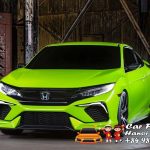vietnam travel guidelines Vietnam is a beautiful and diverse country that offers something for everyone. Whether you are looking for stunning natural scenery, rich cultural heritage, delicious cuisine, or vibrant nightlife, you will find it in Vietnam. However, before you pack your bags and book your flight, there are some things you need to know and prepare for your trip. Here are some of the most important Vietnam travel guidelines that will help you have a smooth and enjoyable experience.
Visa Requirements
One of the first things you need to check is whether you need a visa to enter Vietnam or not. Depending on your nationality, you may be eligible for visa exemption, visa on arrival, or e-visa. You can find more information about the visa policy of Vietnam on the official website of the Ministry of Foreign Affairs. vietnam travel guidelines

- Visa exemption: If you are a citizen of one of the 24 countries that have a visa exemption agreement with Vietnam, you can enter the country without a visa for a certain period of time, ranging from 14 to 90 days. Some of these countries include ASEAN members, Japan, South Korea, Russia, France, Germany, and the UK. However, you may need to show proof of onward travel and sufficient funds for your stay. vietnam travel guidelines
- Visa on arrival: If you are a citizen of one of the 80 countries that are eligible for visa on arrival, you can apply for a visa online and receive an approval letter via email. You will need to print out this letter and bring it with you to the airport, where you will pay a stamping fee and get your visa stamped on your passport. The visa on arrival is valid for single or multiple entries, and for 30 or 90 days. You can apply for a visa on arrival through various online agencies. vietnam travel guidelines
- E-visa: If you are a citizen of one of the 80 countries that are eligible for e-visa, you can apply for a visa online and receive an electronic visa via email. You will need to print out this visa and present it at the immigration checkpoint. The e-visa is valid for single entry and for 30 days. You can apply for an e-visa through the official website of the Immigration Department. vietnam travel guidelines
COVID-19 Regulations
Due to the ongoing COVID-19 pandemic, Vietnam has imposed strict entry restrictions and quarantine measures for all travelers. As of June 2021, only Vietnamese nationals, foreign diplomats, experts, investors, and their family members are allowed to enter the country with prior approval from the authorities. All arrivals must undergo mandatory 14-day quarantine at designated facilities and take several PCR tests during their stay. Domestic travel within Vietnam is also subject to local regulations and may change depending on the outbreak situation. vietnam travel guidelines
Therefore, if you are planning to visit Vietnam in the near future, you should check the latest updates from the official sources and contact your airline or travel agent for more information. You should also follow the health and safety guidelines issued by the Vietnamese government, such as wearing a mask in public places, practicing social distancing, and avoiding large gatherings. vietnam travel guidelines

Best Time to Visit
Vietnam has a tropical monsoon climate with four distinct seasons: spring (February to April), summer (May to August), autumn (September to November), and winter (December to January). The weather varies greatly depending on the region and altitude, so there is no single best time to visit Vietnam. However, some general tips are:
- If you want to enjoy the beaches and islands in the south and central coast, such as Nha Trang, Da Nang, Hoi An, Phu Quoc, or Con Dao, the best time is from December to April when it is dry and sunny. vietnam travel guidelines
- If you want to explore the mountains and ethnic minorities in the north and northwest, such as Sapa, Ha Giang, Mai Chau, or Dien Bien Phu, the best time is from September to November when it is cool and clear. vietnam travel guidelines
- If you want to visit the cultural and historical sites in the north and central regions, such as Hanoi, Ha Long Bay, Hue, or Hoi An, the best time is from February to April or from September to November when it is mild and pleasant. vietnam travel guidelines
- If you want to experience the festivals and events in Vietnam, such as Tet (Lunar New Year), Hung Kings Festival (April), Reunification Day (April 30), International Workers’ Day (May 1), or Mid-Autumn Festival (September or October), you should plan your trip accordingly and book your accommodation and transportation in advance. vietnam travel guidelines

Transportation Options
Vietnam has a well-developed and affordable transportation system that can take you to any destination in the country. Some of the most common and convenient transportation options are:
- Airplane: Flying is the fastest and easiest way to travel between major cities and tourist attractions in Vietnam. There are several domestic airlines that operate frequent and cheap flights, such as Vietnam Airlines, Vietjet Air, Bamboo Airways, and Pacific Airlines. You can book your tickets online or through a travel agent. vietnam travel guidelines
- Train: Taking a train is a scenic and comfortable way to travel along the coast of Vietnam, from Hanoi to Ho Chi Minh City or vice versa. The train journey takes about 30 to 40 hours and offers different classes of service, from hard seat to soft sleeper. You can book your tickets online or at the train station.
- Bus: Taking a bus is a cheap and convenient way to travel within and between cities and provinces in Vietnam. There are many bus companies that offer regular and express services, such as Phuong Trang, Mai Linh, The Sinh Tourist, or Hoang Long. You can buy your tickets online, at the bus station, or from your hotel. vietnam travel guidelines
- Motorbike: Renting a motorbike is a popular and adventurous way to explore Vietnam on your own. You can find many motorbike rental shops in major cities and tourist areas, or ask your hotel for recommendations. You will need a valid driver’s license, an international driving permit, and a helmet. You should also be aware of the traffic rules and road conditions in Vietnam, as they can be chaotic and dangerous.

What to Pack
Packing for Vietnam depends on the season, the region, and the activities you plan to do. However, some general items that you should bring are:
- Passport, visa, travel insurance, and other important documents
- Cash (Vietnamese dong) and credit cards
- Lightweight clothing that covers your shoulders and knees (especially when visiting temples or pagodas)
- Warm clothing and rain gear (depending on the weather and altitude)
- Comfortable shoes and sandals
- Sunscreen, sunglasses, hat, and insect repellent
- Personal hygiene items and medications
- Camera, phone, charger, adapter, and power bank
- A backpack or a suitcase with wheels

What to Do
Vietnam has a lot to offer for travelers of all interests and preferences. Some of the most popular and recommended things to do in Vietnam are:
- Explore the charming capital of Hanoi with its colonial architecture, historical monuments, cultural museums, lively markets, and delicious street food
- Cruise along the UNESCO World Heritage Site of Ha Long Bay with its thousands of limestone islands, caves, fishing villages, and stunning scenery
- Trek through the terraced rice fields and ethnic villages of Sapa or Ha Giang in the northern mountains
- Visit the ancient imperial city of Hue with its citadel, tombs, temples, and gardens
- Wander around the old town of Hoi An with its lantern-lit streets, wooden houses, tailor shops, and riverfront cafes
- Relax on the white-sand beaches and turquoise waters of Nha Trang, Da Nang, Phu Quoc, or Con Dao
- Experience the vibrant nightlife and shopping scene of Ho Chi Minh City with its skyscrapers, museums, markets, bars, and clubs
- Learn about the history and legacy of the Vietnam War at the Cu Chi Tunnels or the War Remnants Museum
- Enjoy the natural beauty and cultural diversity of the Mekong Delta with its floating markets, fruit orchards, coconut farms, and pagodas
- Try some of the most delicious dishes in Vietnamese cuisine such as pho (noodle soup), banh mi (sandwich), bun cha (grilled pork with noodles), spring rolls (fried or fresh), cao lau (noodles with pork and herbs), banh xeo (crispy pancake), or egg coffee

Contact us:
Car For Rent Hanoi VietNam
https://zalo.me/0986244358
Conclusion
Vietnam is a wonderful destination that will surprise you with its beauty, culture, history, food, and people. However, before you go there you need to know some basic Vietnam travel guidelines that will help you prepare for your trip. By following these tips you will have a smooth and enjoyable experience in Vietnam. Have fun! 😊
: https://lanhsuvietnam.gov.vn/Lists/BaiViet/B%C3%A0i%20vi%E1%BA%BFt/DispForm.aspx?List=dc7c7d75%2D6a32%2D4215%2Da6d7%2D5f8c0dc378c2&ID=306&ContentTypeId=0x0100F4FD8DB












